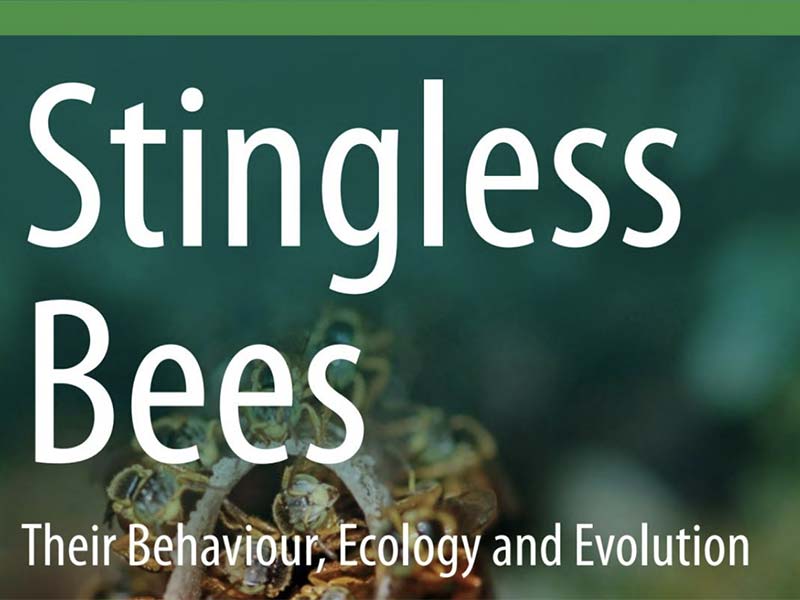Stingless Bees, Their Behaviour, Ecology and Evolution. Autor: Christoph Grûter
The tropics and subtropics are home to thousands of different types of bees. One bee group that frequently calls an observer's attention are the stingless bees or Meliponini. In the Neotropics, for example, about half of all bees that one is likely to see on flowers belongs to this group (Chap. 9). Stingless bees can be smaller than a fruit fly or as large as the giant honey bee Apis dorsata. Like honey bees (Apini), stingless bees live in colonies and produce honey. They are potential pollinators of thousands of plant species and play important roles in human cultures. Like many other animals, stingless bees face new challenges in an increasingly human-modified world, including large-scale habitat loss, the widespread use of agrochemicals, climate change and introduced species, all of which put pressure on stingless bee populations (see Sect. 1.9).
Stingless bees belong to the corbiculate bees (Hymenoptera, Apidae), as do the bumble bees (Bombini), the honey bees (Apini) and the orchid bees (Euglossini). These four groups of bees are characterised by their habit of carrying pollen in a "pollen basket” (or corbicula) on their hind legs (Fig. 1.1). With about 550 described species belonging to dozens of genera, the stingless bees contain more species than the other three groups combined (Fig. 1.2; Chap. 2) (Eardley 2004; Rasmussen and Cameron 2010; Camargo and Pedro 2013; Rasmussen et al. 2017). They can be distinguished from the other corbiculate bees by their lack of a functional sting and a reduced wing venation (Fig. 1.3). The reduction in wing venation was probably the result of the small body size of stingless bee ancestors (Melo 2020). Other typical morphological features of stingless bees are the “penicillum”, a tibial tuft of strong and curved bristles at the base of the hind tibia (Fig. 1.1) and the absence of an auricle (pollen press), an expansion of the base of the hind basitarsus (Michener 2007, Fig. 102-2 therein; see also Quezada-Euán 2018 for more details on stingless bee morphology).
The majority of stingless bee species can be found in the Neotropics (77%), followed by the Indo-Malay/Australasian region (16%) and the Afrotropics (7%). It is striking, however, how little we know about most stingless bee species, especially considering their ecological importance for tropical ecosystem and when compared.
